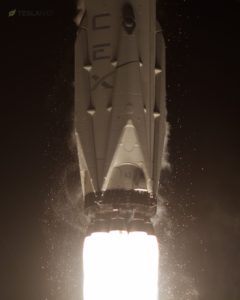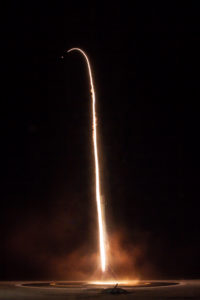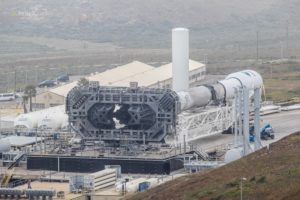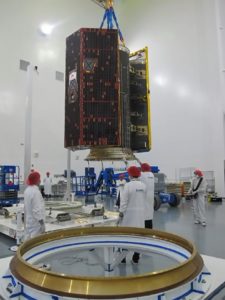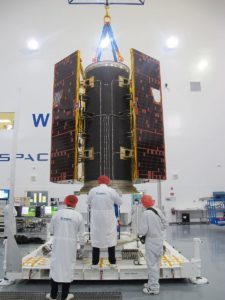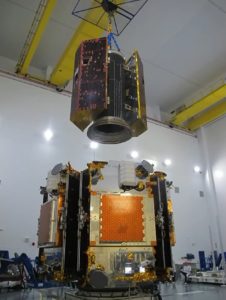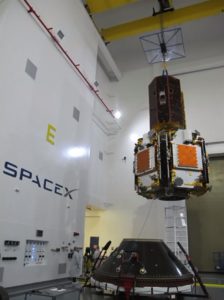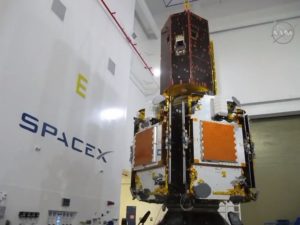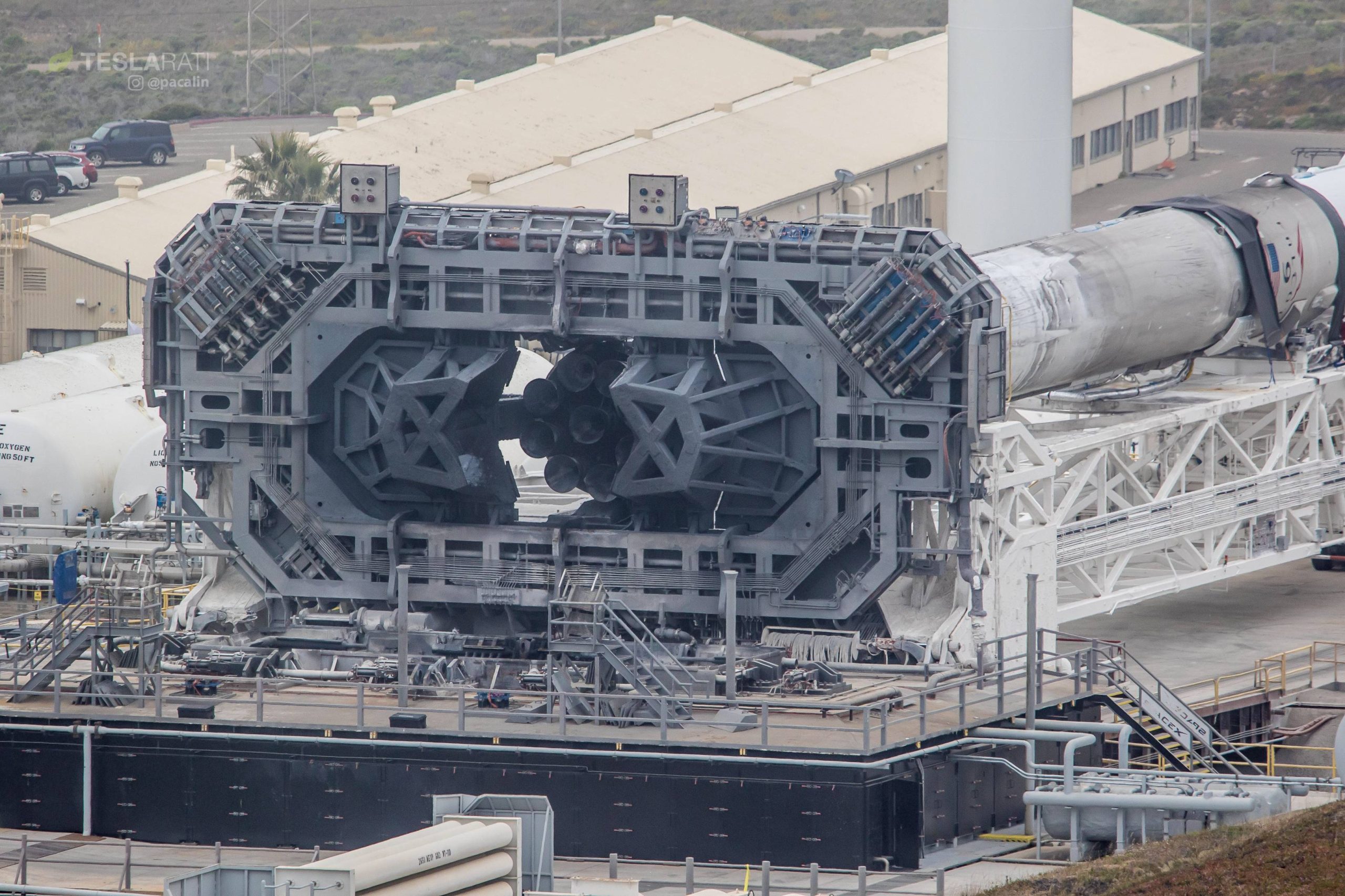
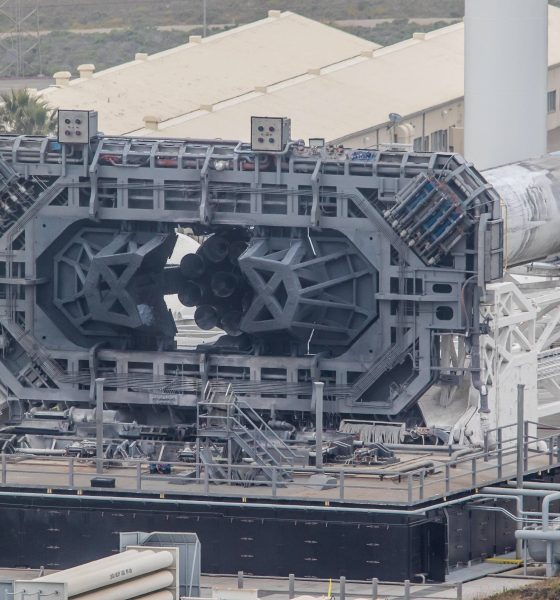
News
SpaceX to launch one of its last old-gen Falcon 9s in upcoming launch
One of SpaceX’s rapidly shrinking fleet of older Falcon 9 launch vehicles has rolled out to the company’s California launch pad ahead of an expendable launch and fairing recovery attempt scheduled for no earlier than Tuesday (NET) 12:47 pm PST/19:47 UTC May 22.
Although SpaceX may have inaugurated a new era of truly reusable rocketry with the debut of Falcon 9 Block 5 earlier this month, there are still a number of older Falcon 9 boosters (all flight-proven) awaiting their second and final flights. At the moment, a minimum of four cores remain, including the sooty Falcon 9 first stage captured earlier this evening by Teslarati photographer Pauline Acalin.
Foreshadowing its imminent watery demise with a lack of landing legs, this particular booster (B1043) previously launched the mysterious and controversial Zuma mission in January 2018, a classified payload claimed (sans convincing evidence) to have failed and reentered Earth’s atmosphere mere hours after reaching orbit. While it’s possible that the mission was a failure, at the moment unsteadily blamed on the failure of a Northrop Grumman-designed payload adapter and deployment mechanism, it’s far more probable that the apparently wildly-expensive satellite is still in orbit.
- Falcon 9 B1043 lifts off for the first time with Zuma on January 7. (Tom Cross/Teslarati)
- After landing at LZ-1, B1043 was refurbished in approximately four months. (SpaceX)
- On May 21, the rocket was rolled out to SLC-4E on the opposite coast of its first launch, ready for one final flight. (Pauline Acalin)
Checking the pulse of Earth’s gravity
Regardless, the same SpaceX rocket booster responsible for lifting Zuma and the Falcon 9 upper stage out of the atmosphere is now ready to launch a new payload at SLC-4E, a launch pad stationed in Vandenberg Air Force Base. B1043’s second orbit-destined payload is a compliment of seven satellites: five are of the Iridium NEXT variety and the remaining satellites make up a scientific mission and technology demonstrator known as GRACE-FO (FO for Follow-On).
- The two GRACE-FO satellites are stacked atop five Iridium NEXT communications satellites. (NASA)
- (NASA)
- (NASA)
- SpaceX is already fairly experienced with launching multi-satellite missions and building custom payload adapters. (NASA)
- A combination of scientific satellites and five Iridium NEXT communications satellites preparing for launch in May 2018. (NASA)
- During a normal Iridium NEXT launch, two groups of five satellites are stacked on top of each other. Here, the top stack was replaced by NASA/DLR’s GRACE-FO spacecraft. (NASA)
Following in the footsteps of the original GRACE’s (Gravity Recovery and Climate Experiment) 15 year orbital tenure, GRACE-FO is effectively the same mission with significantly upgraded hardware – the biggest experimental component is actually an advanced laser interferometer designed to measure the distance between the two satellites (roughly equivalent to the distance between LA and San Diego) with the precision of a single micrometer (10-100x smaller than the width of a human hair). At that level of precision, the pair of satellites can detect minute changes in Earth’s gravity, to the extent that they can actually observe droughts, floods, and ice melt through the change in gravity caused by the movement of large (i.e. heavy) quantities of water. If the experimental laser ranging technology works as intended, it will be at least ten times more accurate than the microwave-ranging technology also installed on the follow-on satellites.
SpaceX’s rocket fleet makes way for Block 5
On the SpaceX side of things, Falcon 9 B1043 will be expended after dutifully completing the launch of Iridium-6/GRACE-FO, although the presence of grid fins on the rocket indicates that SpaceX will likely continue a regime of soft-landing recovery tests to optimize and flesh out the limits of Falcon 9’s capabilities. At first glance, the tradeoff of expending entire rocket boosters able to be (relatively inefficiently) refurbished for considerably more than two flights seems extreme and inadvisable. However, SpaceX is presumably ravenous for data on the survivable envelope of Falcon 9 performance – particularly reuse – in advance of the complete transition to the rocket’s Block 5 iteration, a significant upgrade likely to come hand in hand with a more pronounced aversion to expendable missions given each booster’s design lifespan of 10 to 100 missions. At that level of reusability, expending Falcon 9 Block 5s would truly become comparable with the absurdity of trashing an airliner after one or a handful of flights, an (in)famous talking point used by Elon Musk over his years of public SpaceX discussions.
Thus, if SpaceX can gather data that might enable future Falcon 9 Block 5 recoveries by expending much less valuable Block 3 and 4 boosters, the payoff would be irresistible once examined with a long-term outlook. In the sense that Block 5 may be capable of magnitudes more flights with considerably cheaper refurbishment, the literal elemental value of the hardware – in the likely event that Block 5 production is more capital-intensive than Block 3/4 – is more or less irrelevant for an aversion to expending Block 5 boosters.
Rather, what is lost alongside an expendable Block 5 mission is instead the comparatively vast amount of revenue locked within dozens of additional highly-profitable launches each expended booster could have supported. From that perspective, expending Block 3s and 4s to gather data might be accurately compared to destroying single-pilot Cessnas to improve the utility of a 747 airliner.
After B1043 is expended, only three obvious flightworthy cores will remain outside of the gradually growing Falcon 9 Block 5 fleet (just two boosters, currently). In order of anticipated launch, these three missions are SES-12 (NET May 31), CRS-15 (NET June 28), and the Crew Dragon in-flight abort test (NET Q4 2018). Barring the unexpected refurbishment of an older flight-proven core for a third mission, these final three missions will bring to a close the inherently temporary era of partially-reusable SpaceX rockets – in the words of Elon Musk, Block 5 would thus signify that SpaceX has moved from “the dog that caught the bus” to, perhaps, the dog that caught the bus and then learned how to drive and maintain it. Somewhere in the middle of those final throes of old-guard Falcons will be an ever-increasing cadence of Block 5 launches and re-launches, likely including the first manifest-necessitated reuse of a Block 5 booster sometime this summer.
- Falcon 9 B1045 shows off its own Fairing 2.0 ahead of the launch of TESS. (NASA)
- Chuck Bennett captured Mr Steven conducting high-speed maneuvers with its new, yellow net installed, May 17. (Charles Bennett/@chuckbennett)
- Not nearly enough net, as it turned out. (Pauline Acalin, May 2018)
Meanwhile, despite the sealed fate of the rocket’s booster, tomorrow’s launch will debut fairing-catcher Mr Steven’s new and improved net. With the introduction of an upgraded net and what can only be described as back-to-back days of relentless ocean-going practice over the last two weeks, it’s entirely possible that Iridium-6/GRACE-FO will be able to lay claim to the first successful catch of a payload fairing following an orbital rocket launch. Fingers crossed.
Follow the mission live on SpaceX’s webcast at 12:30 pm PST on Tuesday, May 22, and make sure to check back at Teslarati over the course of the week as photographer Pauline Acalin covers Mr Steven’s return to Port of San Pedro.
Follow us for live updates, behind-the-scenes sneak peeks, and a sea of beautiful photos from our East and West coast photographers.
Teslarati – Instagram – Twitter
Tom Cross – Twitter
Pauline Acalin – Twitter
Eric Ralph – Twitter

News
Tesla FSD fleet is nearing 7 billion total miles, including 2.5 billion city miles
As can be seen on Tesla’s official FSD webpage, vehicles equipped with the system have now navigated over 6.99 billion miles.

Tesla’s Full Self-Driving (Supervised) fleet is closing in on almost 7 billion total miles driven, as per data posted by the company on its official FSD webpage.
These figures hint at the massive scale of data fueling Tesla’s rapid FSD improvements, which have been quite notable as of late.
FSD mileage milestones
As can be seen on Tesla’s official FSD webpage, vehicles equipped with the system have now navigated over 6.99 billion miles. Tesla owner and avid FSD tester Whole Mars Catalog also shared a screenshot indicating that from the nearly 7 billion miles traveled by the FSD fleet, more than 2.5 billion miles were driven inside cities.
City miles are particularly valuable for complex urban scenarios like unprotected turns, pedestrian interactions, and traffic lights. This is also the difference-maker for FSD, as only complex solutions, such as Waymo’s self-driving taxis, operate similarly on inner-city streets. And even then, incidents such as the San Francisco blackouts have proven challenging for sensor-rich vehicles like Waymos.
Tesla’s data edge
Tesla has a number of advantages in the autonomous vehicle sector, one of which is the size of its fleet and the number of vehicles training FSD on real-world roads. Tesla’s nearly 7 billion FSD miles then allow the company to roll out updates that make its vehicles behave like they are being driven by experienced drivers, even if they are operating on their own.
So notable are Tesla’s improvements to FSD that NVIDIA Director of Robotics Jim Fan, after experiencing FSD v14, noted that the system is the first AI that passes what he described as a “Physical Turing Test.”
“Despite knowing exactly how robot learning works, I still find it magical watching the steering wheel turn by itself. First it feels surreal, next it becomes routine. Then, like the smartphone, taking it away actively hurts. This is how humanity gets rewired and glued to god-like technologies,” Fan wrote in a post on X.
News
Tesla starts showing how FSD will change lives in Europe
Local officials tested the system on narrow country roads and were impressed by FSD’s smooth, human-like driving, with some calling the service a game-changer for everyday life in areas that are far from urban centers.

Tesla has launched Europe’s first public shuttle service using Full Self-Driving (Supervised) in the rural Eifelkreis Bitburg-Prüm region of Germany, demonstrating how the technology can restore independence and mobility for people who struggle with limited transport options.
Local officials tested the system on narrow country roads and were impressed by FSD’s smooth, human-like driving, with some calling the service a game-changer for everyday life in areas that are far from urban centers.
Officials see real impact on rural residents
Arzfeld Mayor Johannes Kuhl and District Administrator Andreas Kruppert personally tested the Tesla shuttle service. This allowed them to see just how well FSD navigated winding lanes and rural roads confidently. Kruppert said, “Autonomous driving sounds like science fiction to many, but we simply see here that it works totally well in rural regions too.” Kuhl, for his part, also noted that FSD “feels like a very experienced driver.”
The pilot complements the area’s “Citizen Bus” program, which provides on-demand rides for elderly residents who can no longer drive themselves. Tesla Europe shared a video of a demonstration of the service, highlighting how FSD gives people their freedom back, even in places where public transport is not as prevalent.
What the Ministry for Economic Affairs and Transport says
Rhineland-Palatinate’s Minister Daniela Schmitt supported the project, praising the collaboration that made this “first of its kind in Europe” possible. As per the ministry, the rural rollout for the service shows FSD’s potential beyond major cities, and it delivers tangible benefits like grocery runs, doctor visits, and social connections for isolated residents.
“Reliable and flexible mobility is especially vital in rural areas. With the launch of a shuttle service using self-driving vehicles (FSD supervised) by Tesla in the Eifelkreis Bitburg-Prüm, an innovative pilot project is now getting underway that complements local community bus services. It is the first project of its kind in Europe.
“The result is a real gain for rural mobility: greater accessibility, more flexibility and tangible benefits for everyday life. A strong signal for innovation, cooperation and future-oriented mobility beyond urban centers,” the ministry wrote in a LinkedIn post.
News
Tesla China quietly posts Robotaxi-related job listing
Tesla China is currently seeking a Low Voltage Electrical Engineer to work on circuit board design for the company’s autonomous vehicles.

Tesla has posted a new job listing in Shanghai explicitly tied to its Robotaxi program, fueling speculation that the company is preparing to launch its dedicated autonomous ride-hailing service in China.
As noted in the listing, Tesla China is currently seeking a Low Voltage Electrical Engineer to work on circuit board design for the company’s autonomous vehicles.
Robotaxi-specific role
The listing, which was shared on social media platform X by industry watcher @tslaming, suggested that Tesla China is looking to fill the role urgently. The job listing itself specifically mentions that the person hired for the role will be working on the Low Voltage Hardware team, which would design the circuit boards that would serve as the nervous system of the Robotaxi.
Key tasks for the role, as indicated in the job listing, include collaboration with PCB layout, firmware, mechanical, program management, and validation teams, among other responsibilities. The role is based in Shanghai.
China Robotaxi launch
China represents a massive potential market for robotaxis, with its dense urban centers and supportive policies in select cities. Tesla has limited permission to roll out FSD in the country, though despite this, its vehicles have been hailed as among the best in the market when it comes to autonomous features. So far, at least, it appears that China supports Tesla’s FSD and Robotaxi rollout.
This was hinted at in November, when Tesla brought the Cybercab to the 8th China International Import Expo (CIIE) in Shanghai, marking the first time that the autonomous two-seater was brought to the Asia-Pacific region. The vehicle, despite not having a release date in China, received a significant amount of interest among the event’s attendees.
